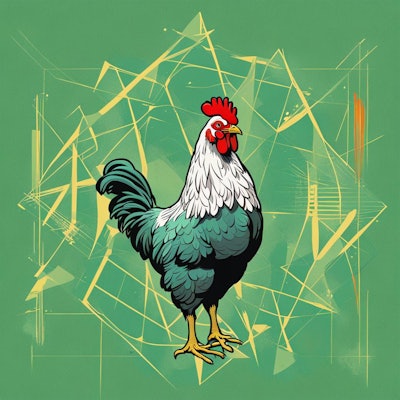
It came to my attention an article published in the U.S. about a “green” rotisserie chicken. I've heard so many incredible things; just last week I blogged about the Guillain-Barré syndrome being blamed by sanitary authorities in Mexico on raw chicken. Here we have another case of complete ignorance of the general public.
The green chicken meat is called ischemic myopathy. I looked for help to learn about this condition, so I talked to my good friend, Dr. Héctor Cervantes, former poultry science professor at the University of Georgia, former president of the American Association of Avian Pathologists (AAAP), has worked for several companies and has extensive international experience.
Here is what I could gather from his vast knowledge: ischemic myopathy, colloquially known as green breast or green muscle disease, once in a while shows up in whole chickens (like rotisserie chickens). No matter what you do, it appears once the chicken is cooked and served, because the myopathy displays in the tender muscle, which is very deep into the body of the bird. Now, in spite of its awkward look, it is fully safe to eat – it contains no pathogens. The reason for the green color is that the muscle fibers lack oxygenation.
Chickens have been bred to develop a very large breast. But there is a point in which muscle development is constrained by bones such as the sternum or keel. Even though chickens do not fly, they do flap their wings, a movement that demands a lot of oxygen in pectoralis muscles, the largest muscles in a bird. So, if there is no expansion, blood supply is constrained, and the muscle is choked so to speak. This creates a change in color.
If green muscle could be detected, companies could easily withdraw those birds. New methods are being developed as we speak.
The article says it is most likely due to what commercial chickens, particularly “cheaper ones,” are being fed with. Do they mean corn? Do they mean soybeans? Do they know that the “expensive” chickens are also raised with corn and soybeans? I guess they think the “expensive” ones are raised with French camembert cheese and champagne, of course. They don’t know it is clearly genetic breeding that has pushed this – not feed.
So, I wonder, when are we going to raise our voices to teach the truth? Let’s make our knowledge viral!
What do you think?



















